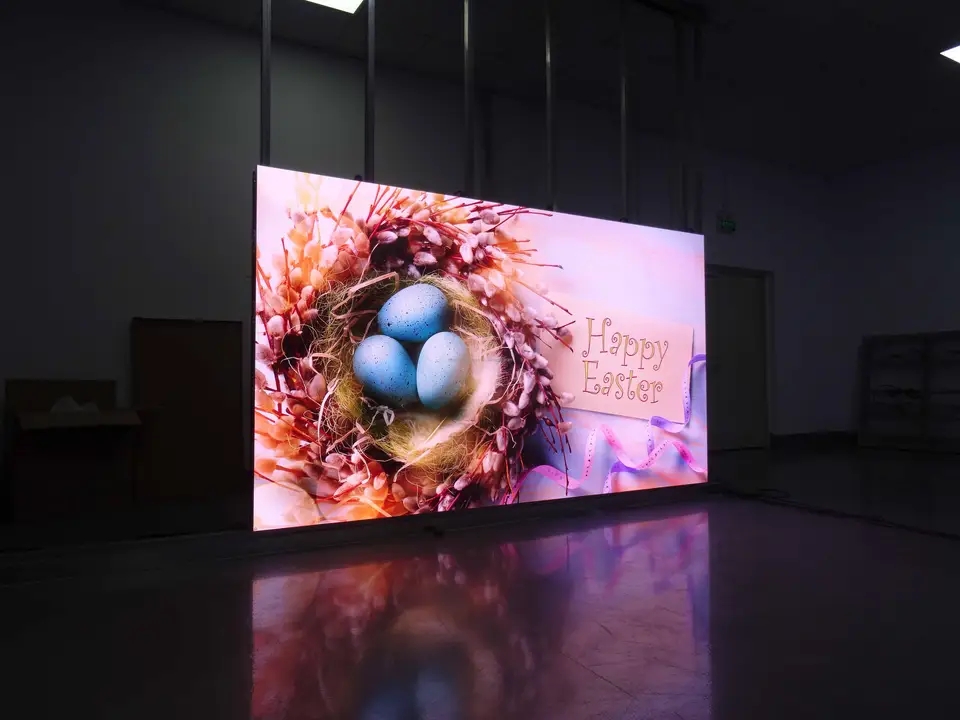The LED screen is composed of a row of light emitting diodes arranged and combined, so the quality of the LED directly affects the overall quality of the display screen. There are five indicators that determine the quality of LED: brightness and perspective, uniformity and clarity, pixel loss rate, lifespan, energy consumption and efficiency. The factors that affect the lifespan of LED display screens include internal and external factors, including the performance of peripheral components, the performance of LED light-emitting devices, and the fatigue resistance of products; The working environment with LED display screens and other internal factors. Heat dissipation is a key factor affecting the quality and service life of LED displays.

Five Key Indicators of LED Display Screen
The importance of LED (Light Emitting Diode) to display screens is similar to that of a car’s engine or air conditioning compressor. Choosing a high-performance LED is a fundamental condition for achieving a high-performance LED display screen. However, even with the same side dishes, seasoning, and stove, chefs of different levels can still cook vastly different dishes. Therefore, whether LED can be used well is the touchstone for testing display screen manufacturers. It is generally believed that the following five key performance indicators of display screens are closely related to LED quality parameters: brightness and perspective, uniformity and clarity, pixel loss rate, lifespan, energy consumption and efficiency.
1、 Brightness and Viewing Angle
The brightness of the display screen mainly depends on the luminous intensity and LED density of the LED. In recent years, new technologies for LED substrates, epitaxy, chips, and packaging have emerged one after another, especially the stability and maturity of indium tin oxide (ITO) current expansion layer technology and processes, which have greatly improved the luminous intensity of LEDs. At present, the international first-class brand of low-power LED has a horizontal viewing angle of 110 degrees and a vertical viewing angle of 50 degrees. The luminous intensity of green tubes has reached as high as 4000mcd, red tubes up to 1500mcd, and blue tubes up to 1000mcd. When the pixel spacing is 20mm, the display brightness can reach over 10000nit. The display screen can work 24/7 in any environment
When it comes to the perspective of display screens, there is a phenomenon worth considering: LED displays, especially outdoor displays, people’s observation angle is basically from bottom to top. However, in the current form of LED display screen products, half of the light flux disappears in the vast sky. Do we have a more reasonable solution in today’s energy shortage? It is worth pondering deeply.
2、 Uniformity and clarity
With the development of LED display screen technology to this day, uniformity has become the most important indicator for measuring the quality of display screens. People often say that LED displays are “little by little brilliant, each piece brilliant”, which is a visual metaphor for the serious unevenness between pixels and modules. A more professional term is “dust effect” and “mosaic phenomenon”.
The main causes of non-uniformity are: inconsistent performance parameters of LED; Insufficient assembly accuracy of display screens during production and installation; Insufficient consistency in electrical parameters of other electronic components; Non standardized module and PCB design, etc.
The main reason is the inconsistency of LED performance parameters. The inconsistency of these performance parameters mainly includes: inconsistent light intensity, inconsistent optical axis, inconsistent color coordinates, inconsistent light intensity distribution curves of each primary color, and inconsistent attenuation characteristics. There are currently two main technical approaches in the industry to solve the inconsistency of LED performance parameters: firstly, by further subdividing LED specifications and parameters, to improve the consistency of LED performance; The second is to improve the uniformity of the display screen through subsequent correction. Subsequent calibration has also evolved from early module calibration and module calibration to today’s point by point calibration. The correction technology has evolved from simple light intensity correction to light intensity color coordinate correction.
However, we believe that subsequent correction is not omnipotent. Among them, inconsistent optical axis, inconsistent light intensity distribution curve, inconsistent attenuation characteristics, poor assembly accuracy, and non-standard design cannot be eliminated through subsequent correction, and even such subsequent correction will worsen the inconsistency in optical axis, attenuation, and assembly accuracy.
Therefore, our conclusion through practice is that subsequent correction is only a superficial treatment, while LED parameter segmentation is the fundamental solution and the future mainstream of the LED display industry.
When it comes to the relationship between screen uniformity and clarity, there is often a misconception in the industry that resolution is used instead of clarity. In fact, the clarity of a display screen is the subjective perception of multiple factors such as screen resolution, uniformity (signal-to-noise ratio), brightness, contrast, etc. by the human eye. Simply reducing the physical pixel spacing to improve resolution while neglecting uniformity is beyond doubt for improving clarity. Imagine a display screen with severe “dust effect” and “mosaic phenomenon”, even if its physical pixel spacing is small and its resolution is high, it cannot achieve good image clarity.
Therefore, in a sense, the main factor currently restricting the improvement of LED display screen clarity is “uniformity” rather than “physical pixel spacing”.
